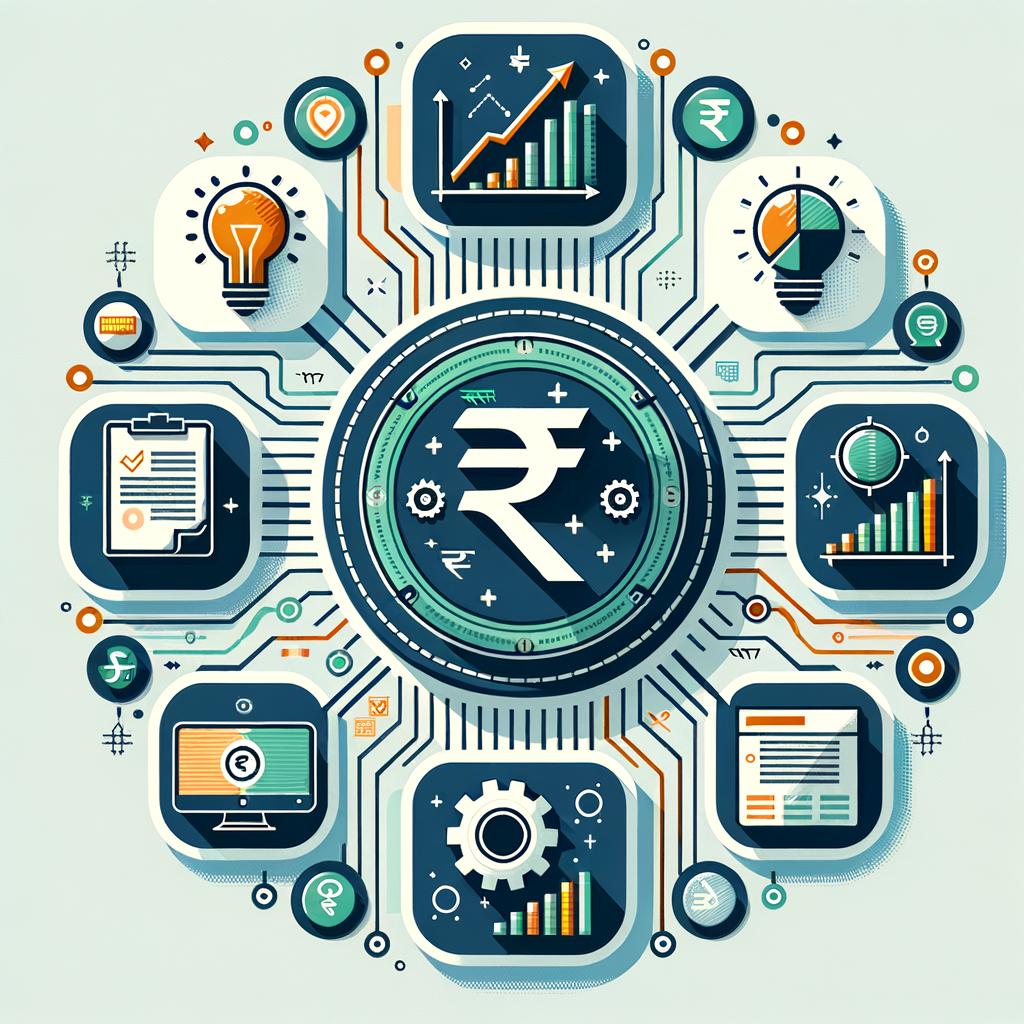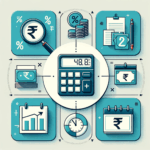Debt Management in the Digital Age: Trends and Innovations
Introduction
Picture this: your phone buzzes with a reminder for your home loan EMI. An email pops up with your monthly credit card statement, while another notification reminds you about the personal loan payment for that recent home renovation. For small business owners, it’s even more complex—tracking supplier payments, managing a business credit line, and chasing overdue invoices. In today’s fast-paced financial world, juggling multiple debt obligations is a common reality. This is where understanding the latest debt management trends becomes crucial, not just for convenience, but for your financial survival and growth. The sheer volume and speed of digital transactions can make traditional tracking methods obsolete and overwhelming. Technology, however, is not just the source of this complexity; it is also the most powerful solution. This article will explore the most significant innovations and digital strategies transforming how we handle our finances, providing a clear roadmap for both salaried individuals and small business owners who are serious about managing debt in the digital age India.
The Evolution from Traditional to Digital Debt Management
For generations, debt management was a manual, often tedious, process. It involved physical ledgers, diary reminders, monthly visits to the bank, and piles of paperwork. While these methods worked in a simpler financial ecosystem, they are no match for the complexities of today’s digital economy. The rise of UPI, Buy-Now-Pay-Later (BNPL) services, instant personal loans, and diverse fintech lending options has created a financial landscape that is faster, more fragmented, and requires real-time oversight. Relying on an old-school spreadsheet or a physical diary to track multiple payment cycles, varying interest rates, and due dates is not just inefficient—it’s risky. A single missed payment can trigger late fees, penalty interest, and a significant drop in your CIBIL score, impacting your future ability to secure credit. The digital age demands digital solutions.
Why Old-School Methods Fall Short
The limitations of traditional debt management are glaringly obvious in the current environment. Manual tracking is prone to human error, such as forgetting a due date or miscalculating interest. There is a complete lack of real-time visibility; you only know your financial standing when you manually update your records. Communication with lenders often involved long phone calls or branch visits, leading to significant delays in resolving issues or getting information. Furthermore, these methods offer no analytical insights. They can’t help you identify spending patterns that lead to debt or simulate different repayment scenarios to find the fastest way to become debt-free. This reactive, rather than proactive, approach is simply unsustainable for anyone looking to build wealth and maintain financial stability in India’s dynamic economy.
| Feature | Traditional Methods (Spreadsheets, Diaries) | Modern Digital Tools |
|---|---|---|
| Visibility | Periodic, manual updates | Real-time, automated dashboard |
| Accuracy | Prone to human error | High, with automated calculations |
| Reminders | Manual or non-existent | Automated, intelligent notifications |
| Accessibility | Limited to a specific device/location | Accessible 24/7 on any device |
| Insights | None | AI-driven spending analysis & forecasts |
| Efficiency | Time-consuming and cumbersome | Fast, streamlined, and automated |
Top Digital Debt Management Trends in India for Individuals
For salaried professionals, managing personal debt effectively is the cornerstone of financial wellness. Fortunately, a new wave of technology is making this easier than ever. The focus has shifted from mere tracking to intelligent, proactive management. These innovations in debt management India are empowering individuals to take control of their finances with unprecedented ease and insight.
1. AI-Powered Personal Finance & Budgeting Apps
Artificial Intelligence (AI) is no longer a futuristic concept; it’s in your pocket. Modern personal finance apps leverage powerful AI algorithms to offer a consolidated view of your entire financial life. By securely linking to your bank accounts and credit cards, these apps automatically categorize your expenses, helping you see exactly where your money is going. They can identify recurring bills, track subscription services, and create highly personalized budgets based on your unique spending patterns. More importantly, they act as your personal financial assistant, sending smart reminders for upcoming due dates to help you avoid late fees. Many apps also feature sophisticated debt payoff planners that allow you to simulate different strategies, like the “debt snowball” or “debt avalanche” method, to see which one gets you out of debt faster. These are no longer just apps; they are essential digital tools for debt management in India.
2. Automated Debt Consolidation Platforms
One of the biggest challenges in debt management is juggling multiple high-interest debts, such as several credit card balances or personal loans. Each comes with its own due date, interest rate, and statement. Debt consolidation simplifies this by combining all your existing unsecured debts into a single new loan, ideally with a lower interest rate and a single, manageable monthly payment (EMI). In the past, this process was cumbersome, requiring extensive paperwork and multiple bank visits. Today, fintech platforms have revolutionized this space, offering some of the most effective digital debt solutions for Indians. You can now check your eligibility online, compare offers from multiple lenders in minutes, and receive instant approval without leaving your home. These platforms use technology to assess your credit profile quickly, making debt consolidation a far more accessible and transparent strategy for reducing your interest burden and simplifying your financial life.
3. Gamification for Debt Repayment
Paying off debt can be a long and psychologically draining journey. It’s easy to lose motivation when the finish line seems years away. Recognizing this, app developers have started incorporating elements of “gamification” to make the process more engaging and rewarding. This trend uses game-like mechanics to encourage positive financial behavior. For instance, an app might award you points or badges for making on-time payments for six consecutive months. You might see a visual progress bar showing how much of your loan you’ve “defeated” or even compete on leaderboards with other users on a similar debt-free journey. By breaking down a large, intimidating goal into smaller, achievable milestones and celebrating these small wins, gamification taps into our natural desire for achievement and recognition. This psychological boost can be incredibly powerful in keeping you consistent and focused on your long-term goal of financial freedom.
Innovations in Debt Management India for Small Businesses
For small business owners, debt is a double-edged sword. It’s often necessary for growth (working capital, expansion), but if managed poorly, it can cripple the entire operation. Cash flow is the lifeblood of any business, and effective debt management—both money owed and money to be collected—is critical. The latest debt management technology trends India are providing MSMEs with tools previously available only to large corporations, from Managing Cash Flow Effectively During Tax Season to automating payables.
1. Cloud-Based Accounting Software for Real-Time Tracking
Gone are the days of desktop-based accounting software updated only at the end of the month. Modern cloud-based platforms like Zoho Books, TallyPrime on Cloud, and QuickBooks have transformed how businesses monitor their financial health. A guide to help you Set Up An Accounting System for My Small Business can be the first step towards this transformation. These tools offer a real-time, 360-degree view of your finances. By integrating directly with your business bank accounts, they automatically track all incoming and outgoing payments. This allows you to monitor your accounts payable (money you owe to suppliers) and accounts receivable (money owed to you by clients) from a single, easy-to-understand dashboard. Features like automated invoice generation, GST compliance checks, and scheduled payment reminders ensure that you never miss paying a supplier (protecting your business credit) and that you gently nudge clients to pay on time (improving your cash flow). This real-time visibility is arguably one of the most impactful debt management trends India for businesses, allowing owners to make informed decisions based on current data, not outdated reports.
2. Digital Lending and Automated Repayment
Securing a business loan used to be a lengthy process involving endless paperwork, multiple visits to the bank, and a long wait for approval. The rise of digital lending platforms has changed the game. Fintech lenders use advanced analytics and alternative data (like your business’s online sales or GST returns) to assess creditworthiness, offering faster approvals and more flexible loan products tailored to small businesses. More importantly, these platforms are built on a foundation of digital repayment. By setting up an e-mandate or NACH debit, loan repayments are automatically deducted from your business account on the due date. This automation is a powerful tool for managing debt in the digital age India. It eliminates the risk of missed payments due to human error, helping you maintain a pristine repayment history and build a strong business credit score, which in turn makes it easier and cheaper to secure financing in the future.
3. Technology-Driven Debt Recovery Strategies
A crucial part of business debt management is on the other side of the coin: recovering money owed to you. Unpaid invoices can starve a business of essential cash flow. Fortunately, technology offers several efficient and professional debt recovery strategies for Indians that are far more effective than traditional phone calls.
- Automated Communication: Modern accounting software allows you to set up a sequence of automated reminders. You can configure a polite email to be sent a few days before an invoice is due, another on the due date, and a series of increasingly firm (but still professional) reminders if the payment becomes overdue. This automates the follow-up process, ensuring no invoice is forgotten.
- Digital Payment Links: One of the biggest barriers to timely payment is inconvenience. By embedding a “Pay Now” link directly in your digital invoice, you make it incredibly easy for your clients to pay you. These links can connect to multiple payment options like UPI, credit/debit cards, and net banking, removing friction from the payment process.
- Legal Tech Platforms: For persistently overdue accounts, you no longer need to immediately engage an expensive lawyer. Several legal tech platforms in India allow you to send a formal, legally sound demand notice drafted by professionals for a very nominal fee. This official communication often prompts immediate payment and serves as a crucial first step if legal action becomes necessary.
Choosing the Right Digital Debt Management Tools
With a flood of new apps and platforms, selecting the right one can be daunting. It’s essential to look beyond the flashy marketing and evaluate tools based on your specific needs and security requirements. Here are the key factors to consider before entrusting a digital tool with your financial data.
Key Factors to Consider
- Security: This is non-negotiable. Ensure the app or platform uses end-to-end encryption to protect your sensitive data. Look for compliance with RBI guidelines and data privacy laws. A crucial and actionable step is to verify if the lending entity or platform is registered with the RBI. You can do this by checking the list of regulated entities on official portals like the RBI’s Sachet website, which is designed to protect consumers.
- Features vs. Needs: Don’t pay for features you don’t need. A salaried individual might prioritize an app with strong credit card management and budgeting features. A small business owner, on the other hand, would need a tool with robust invoicing, accounts payable/receivable tracking, and GST compliance. Make a list of your top priorities and find a tool that excels in those areas.
- User-Friendliness and Integration: The most powerful tool is useless if it’s too complicated to use. Look for a clean, intuitive interface and a smooth onboarding process. For businesses, the ability to integrate with your existing bank accounts and other software (like your CRM or e-commerce platform) is a massive advantage, as it automates data flow and saves significant time.
- Cost and Fee Structure: Be wary of hidden charges. Reputable platforms will have a transparent pricing model, whether it’s a flat monthly subscription, a one-time fee, or a small percentage of the transaction. Read the terms and conditions carefully to understand all associated costs before you commit.
Conclusion
The way we manage money has fundamentally changed. The shift from manual ledgers to intelligent, automated systems marks a significant leap forward in financial empowerment. As we’ve explored, the latest debt management trends—from AI-powered personal finance apps and automated consolidation platforms for individuals to cloud accounting and digital recovery tools for businesses—are no longer just conveniences; they are essential for navigating India’s complex digital economy. Embracing these innovations allows you to move from a reactive state of simply paying bills to a proactive strategy of optimizing cash flow, reducing interest costs, and building a secure financial future. This is the new standard for managing debt in the digital age India.
Navigating debt can be complex, even with the best tools. If you need expert guidance on creating a debt strategy for your personal finances or your business, contact the financial experts at TaxRobo Online CA Consultation Service today. We can help you build a clear path to financial freedom.
Frequently Asked Questions (FAQs)
1. Are digital debt management apps safe to use in India?
Yes, provided you choose reputable apps that are compliant with RBI regulations and have strong security protocols like data encryption. Always read user reviews, check the app’s permissions before installing, and prefer apps from well-known financial institutions or established fintech companies. Verifying their credentials on official websites is a great practice.
2. Can these digital tools help improve my CIBIL score?
Indirectly, yes. While the tools themselves don’t interact with CIBIL, they promote habits that lead to a better score. By providing timely payment reminders, helping you create and stick to a budget, and preventing missed payments, these tools help you build a positive and consistent credit history, which is the single most important factor in your CIBIL score. Learning How to Track Your Credit History Using Your PAN Card Via CIBIL is an excellent way to monitor this progress.
3. What is the difference between debt consolidation and debt management?
Debt consolidation is a specific financial product. It involves taking out a single new loan to pay off multiple existing debts, simplifying your repayments into one EMI. Debt management is a much broader strategic process. It involves everything from budgeting, expense tracking, and creating a repayment plan to using various tools and seeking professional advice to control and eliminate your debts. Consolidation can be one part of a larger debt management strategy.
4. As a small business owner, what is the best first step for digital debt recovery?
The best and most effective first step is to implement a digital invoicing system that includes automated payment reminders. This is a simple, non-confrontational, and highly professional debt recovery strategy for Indians. It ensures that your clients are reminded politely and systematically, and it often resolves late payments without requiring any direct, time-consuming follow-up from your end, preserving your client relationships while improving your cash flow.



